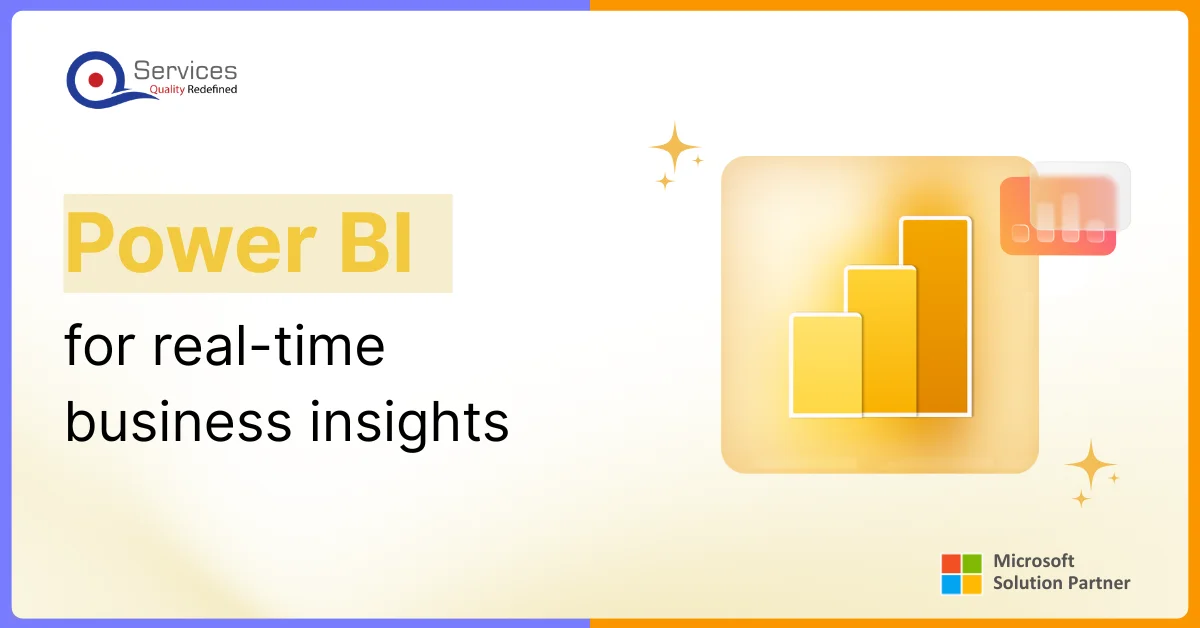
Home » What does it mean to be a Microsoft Solutions Partner ?

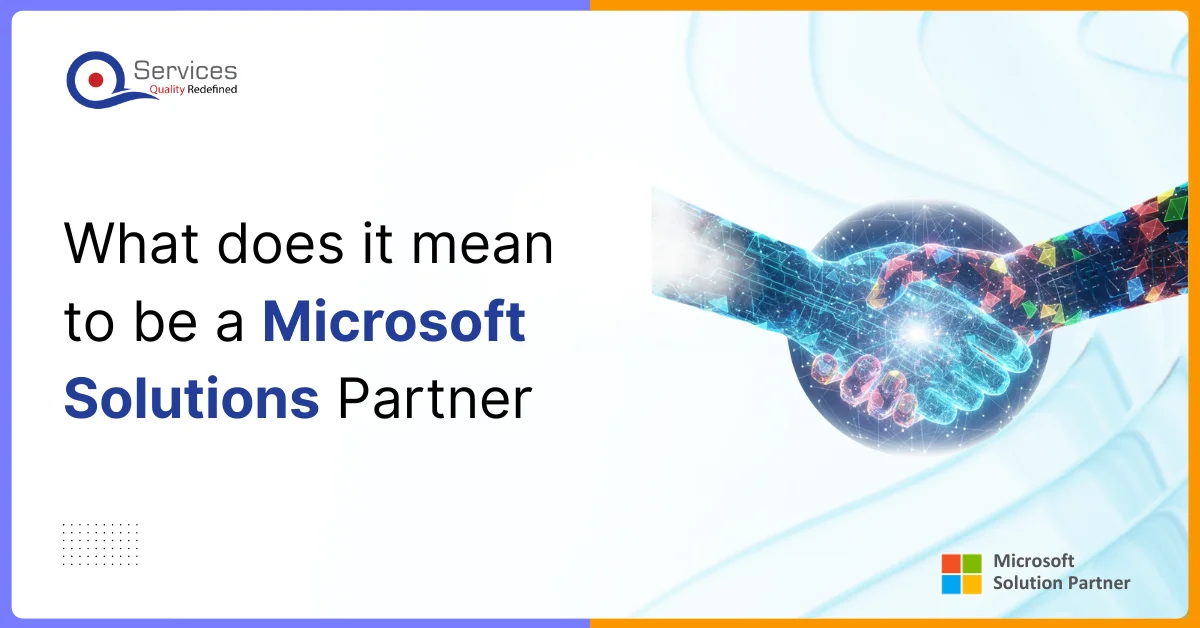
In an era where technology shifts faster than any corporate strategy can keep up, the real concern for IT leaders is how their organization can leverage Microsoft effectively without disrupting operations. This is where the Microsoft Solutions Partner program becomes relevant. More than just a badge, it represents a structured pathway for companies to access specialized expertise, advanced Azure capabilities, and recognition across the Microsoft ecosystem.
The demand for cloud-driven innovation is rising sharply. According to a 2025 Gartner report, over 78% of enterprise digital initiatives now involve multi-cloud strategies, yet many organizations struggle to implement these effectively due to fragmented skills and limited visibility into Azure services. For tech teams managing complex workflows, the Microsoft solutions partner designation signals that a company has the required capabilities to optimize Microsoft solutions while reducing risk and accelerating adoption.
Here’s the core question: What differentiates a Microsoft Solutions Partner from a standard partner? It’s not simply certification. It’s the ability to deliver measurable outcomes, be it through Azure migration, AI-driven automation, or advanced analytics.
The foundation of the program lies in Microsoft Solutions & Azure Services, which includes everything from cloud infrastructure and AI integrations to IoT solutions and cybersecurity frameworks. By focusing on these pillars, a Microsoft solutions partner ensures that client organizations are optimizing technology for real-world business impact.
For example, enterprises adopting Azure cloud with a Solutions Partner often report a 30–40% reduction in infrastructure overhead and a 25% faster project delivery time, compared to internal deployments without certified guidance. These statistics underscore the tangible value a Solutions Partner brings, beyond marketing claims.
So, how do you know a partner can deliver across complex Azure and Microsoft stacks? A Solutions Partner demonstrates:
Each of these factors reduces operational risk while enhancing strategic agility.
These questions set the stage for deeper exploration. further, we’ll break down partner categories, competency requirements, capability scores, and practical strategies that tech teams can leverage immediately.
When companies pursue digital transformation, one of the first challenges is choosing the right partner. Not all Microsoft partners are created equal. Understanding Microsoft Solutions Partner categories and competencies is key to ensuring the right fit for complex Azure Services initiatives.
The Microsoft solutions partner designation is organized into targeted categories that align with specific solution areas:
These categories aren’t just labels—they are a framework for reliability. Businesses working with a partner in the right category often report 30–40% faster cloud deployment and measurable reductions in operational friction.
It’s one thing to claim a title; it’s another to demonstrate verified expertise. Microsoft Partner competencies are measurable indicators that a partner can deliver outcomes at scale. For example:
Organizations partnering with a certified microsoft solutions partner report faster ROI on Microsoft technology adoption compared to internal-only implementations.
Microsoft’s Partner capability score requirements act as a tangible measure of a partner’s expertise across technical delivery, customer success, and business growth. A higher score ensures access to advanced Azure resources, early feature releases, and prioritized support. This metric differentiates a Solutions Partner who can execute at scale from a partner with only theoretical knowledge.
So, Instead of asking, “Which partner is right?” consider: What combination of competencies and categories will maximize outcomes for my organization’s cloud, AI, and workflow initiatives? Framing it this way shifts the focus from badge recognition to strategic impact.
The term Microsoft solutions partner designation often sparks curiosity. Many assume it’s just another badge but in reality, it represents a rigorous certification journey that aligns technical capability with business outcomes. For tech leaders navigating complex cloud, AI, and automation projects, understanding this pathway is critical.
Becoming a Solutions Partner starts with meeting Microsoft partner requirements. This is not just about ticking boxes; it ensures a partner has verified expertise across Microsoft Solutions & Azure Services, ready to handle enterprise-grade projects.
Once a company earns Microsoft partner certification, it demonstrates practical ability in areas like Azure cloud migration, AI deployment, and Power Platform integration. But certifications only matter when they translate into measurable outcomes, such as reduced infrastructure costs or faster workflow automation, which is proof that technical knowledge drives tangible business value.
Not all competencies are equal. Some partners focus on cloud solutions, others on data & AI analytics, and some on workflow modernization. A carefully selected Solutions Partner uses these Microsoft Solutions Partner specializations to solve specific operational challenges.
Consider a mid-sized tech company struggling with fragmented cloud workloads. By engaging a certified Solutions Partner with cloud and AI competencies, the company reduced deployment time by 30% while streamlining monitoring with Azure Services. The difference isn’t the badge—it’s the partner’s ability to convert certification into strategic advantage.
Beyond certifications, Microsoft evaluates partners with capability scores, which reflect their performance in delivery, customer success, and technical expertise. A higher score signals predictable execution and resource access. For organizations adopting multiple Azure Services, this translates into priority support, early feature access, and smoother integration, benefits often overlooked by decision-makers unfamiliar with the program.
The most effective partners don’t just check technical boxes they align with broader business goals. They answer questions like:
They drive real decisions in enterprise IT strategy.
Get free Consultation and let us know your project idea to turn into an amazing digital product.

Modern enterprises face a maze of interdependent priorities: cloud adoption, AI integration, workflow automation, and security compliance. Navigating this landscape requires a solution partner who can orchestrate a cohesive strategy across Microsoft Solutions & Azure Services.
Consider a company expanding its digital infrastructure while introducing AI-driven analytics. A certified partner with expertise in Microsoft Partner competencies orchestrates these deployments, ensuring that predictive insights feed into automated workflows on Power Platform without creating bottlenecks. This approach minimizes disruption while maximizing efficiency.
Decision-makers often confront trade-offs:
A seasoned Microsoft solutions partner doesn’t just execute projects—they provide strategic guidance, helping CTOs and IT heads weigh these decisions, anticipate risks, and design a roadmap that balances short-term gains with long-term scalability.
The rapid evolution of Microsoft Solutions & Azure Services means enterprises must adopt solutions that are not only functional today but adaptable tomorrow. Solutions Partners leverage Microsoft Cloud Solutions Partner tiers to offer early access to emerging technologies, design resilient architecture, and embed governance frameworks that ensure security, compliance, and sustainability.
In practice, this means:
Transformational impact in action
Rather than static certifications, the true value of a Solutions Partner emerges in how they transform enterprise operations by:
If you’re leading technology in a fast-moving enterprise, you already know the toughest truth — buying tools doesn’t build transformation. What matters is integration, scalability, and adaptability. That’s exactly where a Microsoft solutions partner becomes invaluable, by using Microsoft Solutions & Azure Services to turn complex enterprise environments into well-orchestrated, data-driven systems.
Why data gravity matters more than more tools (h3)
Most organizations believe they need new tools. In reality, they need better data flow.
When data is locked in ERP, CRM, or department apps, insights come too late. A Microsoft solutions partner redefines your data architecture around Azure Synapse, Dataverse, and Power BI to sure every business decision is built on real-time intelligence.
Automation that just mimics steps is outdated. What enterprises need now is context-aware systems, workflows that learn and evolve.
With Microsoft Solutions & Azure Services, a microsoft solutions partner uses Power Automate, Azure AI, and Copilot to create systems that understand business intent.
Imagine your service desk predicting recurring issues and prioritizing tickets automatically. Or expense approvals adapting based on real spending behavior. This is where automation becomes an intelligent operational layer.
Every enterprise has legacy platforms too critical to replace yet too outdated to scale.
A microsoft solutions partner bridges that gap through Azure Hybrid Solutions and Azure IaaS, connecting on-premise systems to modern cloud environments without forcing a rewrite.
That means your 10-year-old ERP can still feed data into Azure dashboards, your workflows can run across hybrid networks, and modernization happens incrementally, not disruptively.
It’s how large enterprises evolve at speed without breaking what already works.
Here’s the real differentiator: moving from “What happened?” to “What happens next?”
Using Azure Machine Learning and Azure AI, a Microsoft solutions partner embeds predictive intelligence into the enterprise core. From supply chain forecasting to HR attrition prediction — every function becomes more proactive.
One manufacturing client, for instance, reduced downtime by 35% using AI-driven maintenance schedules built on Azure models. The system learned equipment behavior and adjusted service frequency automatically and that’s applied intelligence engineered through Microsoft Solutions & Azure Services.
Every CTO knows — the best technology fails if people don’t adopt it.
A Microsoft solutions partner doesn’t just configure systems; they align them with user behavior, compliance, and operational roles.
That includes:
The Microsoft solutions partner designation guarantees proven technical capabilities, measurable outcomes, and ongoing collaboration with Microsoft itself.
For enterprises, this translates into less risk and more reliability. When systems evolve, updates roll out, or compliance rules change, your partner ensures continuity not chaos.
In enterprise environments, trust is non-negotiable. Systems must function efficiently while remaining secure and compliant. A Microsoft Solutions Partner ensures governance is integrated into workflows, not treated as an afterthought. Policies, access controls, and reporting are aligned with operational realities, enabling teams to act confidently while maintaining compliance.
Sensitive information across ERP, CRM, and operational platforms is managed through Azure Active Directory with role-based access. Automated monitoring via Microsoft Purview continuously detects policy deviations, while audit-ready reports ensure regulatory obligations are met without manual effort. This provides decision-makers with real-time visibility and operational confidence.
Security is embedded at every layer. Zero-trust access, encryption, and key management across hybrid environments reduce exposure. Azure Sentinel provides real-time threat detection and alerting, ensuring proactive mitigation rather than reactive responses. Every workflow is secured without disrupting productivity.
Blind spots in enterprise operations can lead to critical disruptions. By leveraging telemetry from Power Platform, Dynamics 365, and Azure Services, a Microsoft Solutions Partner identifies anomalies in real time. Scenario testing validates workflows under unexpected conditions, ensuring resilience and operational reliability.
Hybrid setups introduce complexity. A Microsoft Solutions Partner enforces consistent policies across on-premises, cloud, and multi-cloud environments. Unified audit trails, automated retention rules, and data classification with Microsoft Purview maintain regulatory alignment while allowing enterprises to scale confidently.
Resilience is built through anticipation. Simulated attacks, recovery testing, and third-party risk assessments enable enterprises to maintain critical operations during disruptions. Failover systems built on Azure IaaS and Azure PaaS provide reliability and continuity at scale.
The Microsoft Solutions Partner designation reflects verified expertise and access to Microsoft’s advanced ecosystem. Enterprises gain assurance that modernization, cloud adoption, and AI integration happen securely, compliantly, and efficiently. Trust becomes embedded in workflows, updates, and strategic decisions, supporting both resilience and growth.
Share your project idea with us. Together, we’ll transform your vision into an exceptional digital product!

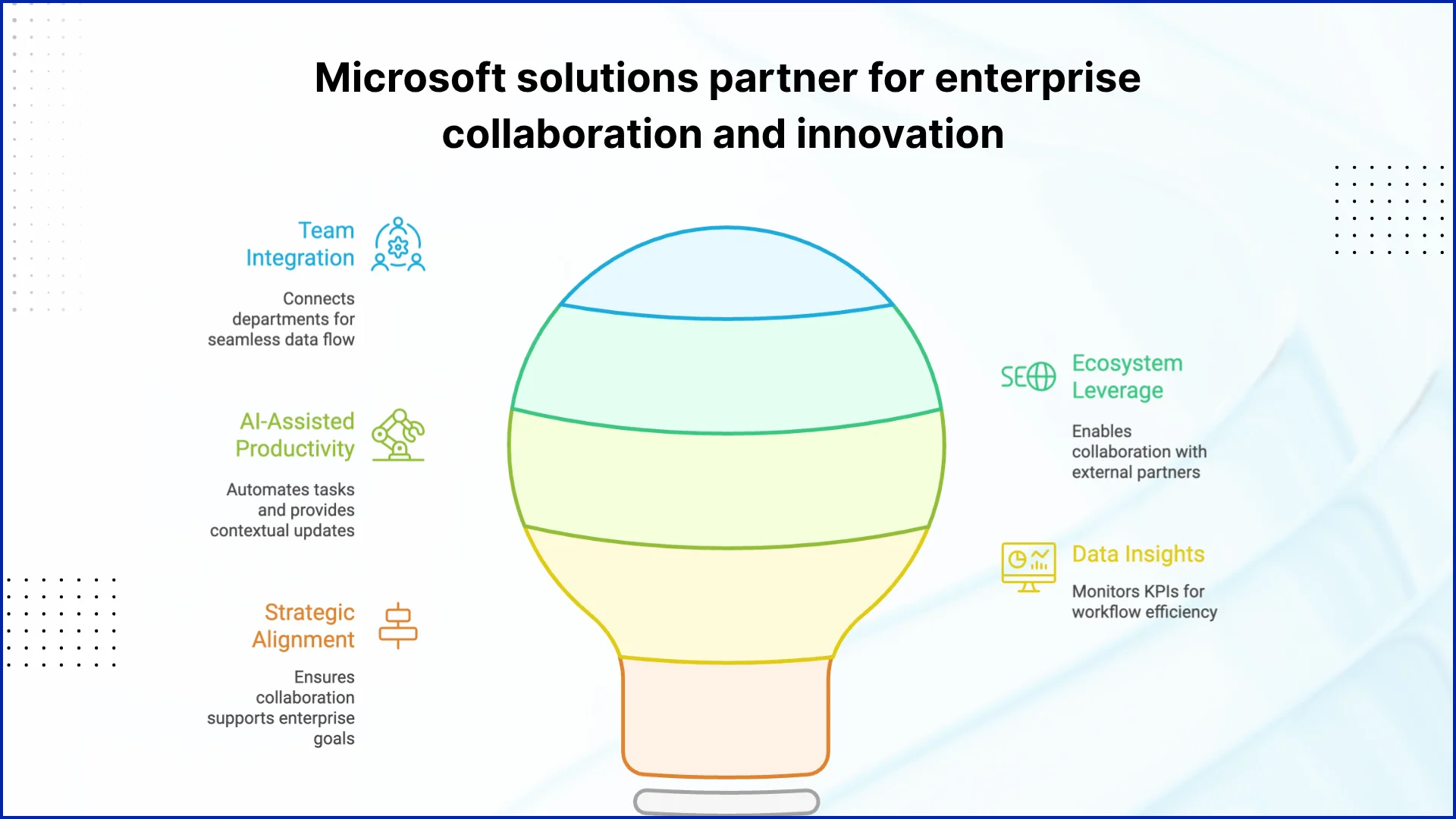 Enterprises today face increasing pressure to innovate while keeping teams aligned and projects on track. Fragmented workflows and siloed data slow decision-making and limit growth. A Microsoft Solutions Partner helps organizations unify processes, integrate tools, and enable smarter collaboration across internal teams and external partners.
Enterprises today face increasing pressure to innovate while keeping teams aligned and projects on track. Fragmented workflows and siloed data slow decision-making and limit growth. A Microsoft Solutions Partner helps organizations unify processes, integrate tools, and enable smarter collaboration across internal teams and external partners.
A Solutions Partner has proven skills and real experience with Microsoft tools. They get special access to Microsoft’s newest features and support so they can help businesses complete projects faster and with less risk than average partners.
The main specialties are Cloud Solutions, Data & AI, Modern Work & Security, and Business Applications. Partners with skills in cloud migration and AI often help companies finish projects 30-40% quicker and reduce costs significantly.
They follow best practices, use their experience, and have proven success to avoid downtime and control costs. They also ensure everything is secure and compliant during migration, so businesses run smoothly.
Certifications prove that the partner’s team knows Microsoft technologies well. This gives businesses confidence that the partner can handle complex systems and bring intelligent automation to their processes.
Yes. They build smart workflows that reduce repetitive tasks and fit well with how teams already work, making the transition smooth and improving efficiency without overwhelming staff.
They set up data systems that deliver real-time insights to every department using tools like Azure Synapse, Dataverse, and Power BI. This helps teams access accurate information quickly to make better decisions.
They build security and compliance into everyday business tools using Microsoft’s security features, automating monitoring and reporting to keep data safe and meet regulations without extra manual work.
They connect older systems to the cloud with hybrid solutions, allowing businesses to update technology bit by bit without stopping current operations, preserving previous investments while gaining new capabilities.
Businesses often see projects finish 25-40% faster, costs drop, equipment downtime reduce by about 35% with AI maintenance, and employees become more productive because of automated workflows.
They bring teams together with Microsoft Teams, Power Platform, and Dynamics 365 so information flows smoothly. AI tools help automate routine tasks, freeing employees to focus on creative and important work.
Partners get access to the latest tools, early releases, and top support from Microsoft helps businesses keep up with new technology and stay secure, compliant, and competitive as they grow.

Have a one on one discussion with our Expert Panel

In the past, business intelligence tools focused on collecting data and creating reports every month. That approach worked when things moved slowly. Now, businesses need to make decisions in seconds. Waiting for static reports can mean missing sales, reacting late to supply issues, or not spotting financial risks on time.
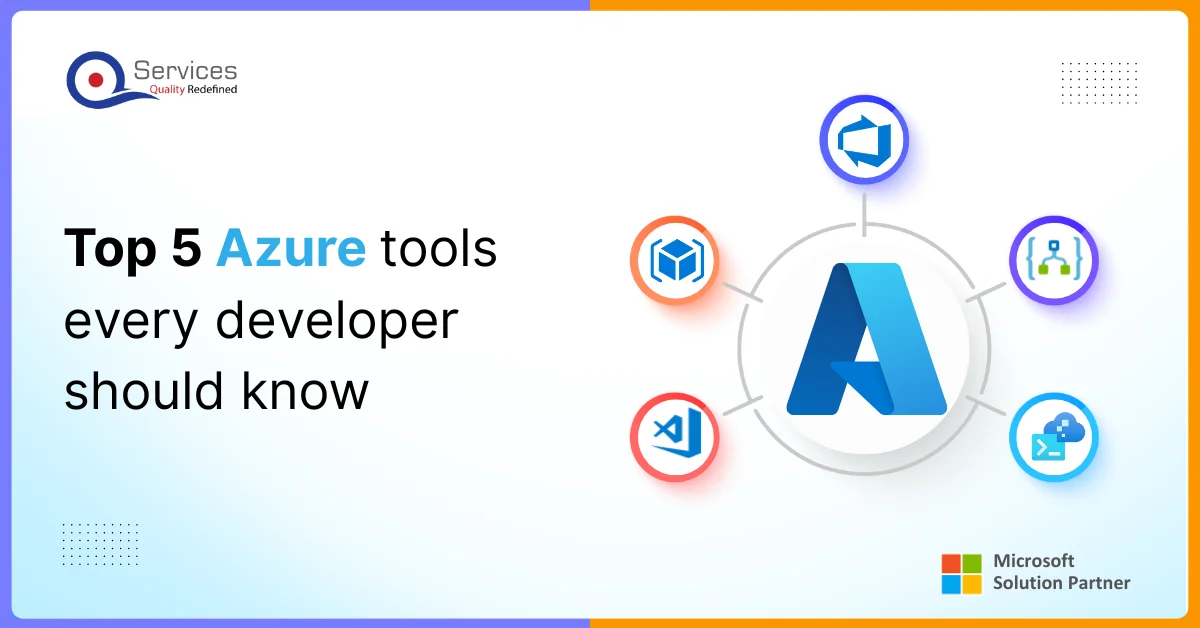
In 2026, it’s vital for every developer to be skilled in using the right set of Azure developer tools for cloud projects. Microsoft’s Azure cloud platform is at the center of this shift, providing a wide range of solutions for building and managing apps. With cloud development with Azure, teams can launch reliable apps that scale globally and respond to business needs in real time. Picking the right items from the Azure tools list can save time, money, and help you get better results.
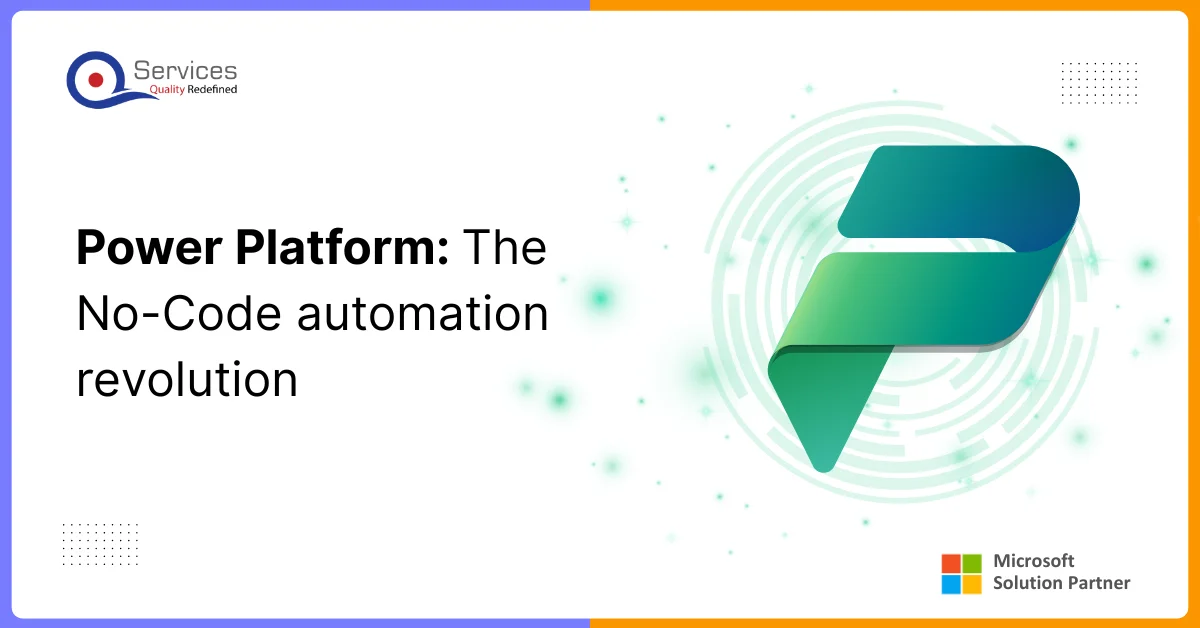
As this year closes, no-code automation is steering digital transformation across industries. Businesses that began with low-code tools are now scaling faster through Power platform development strategies. Many are realizing that innovation, security, and efficiency can coexist when automation is built on Microsoft Power platform.

Founder and CEO

Chief Sales Officer
